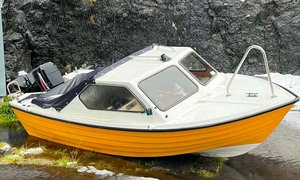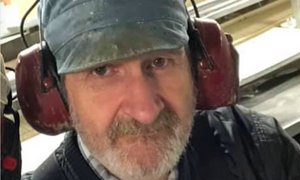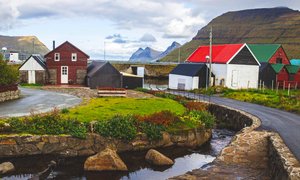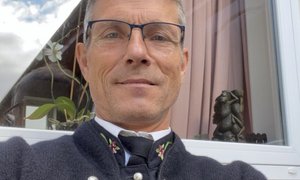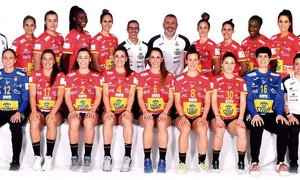Tórshavn, 6th of October, 2014
To Sea Shepherd Conservation Society.
Att.: Capt. Paul Watson and to whom it may concern.
Dear Sir.
Please stop your disturbing our standar of living in the Faroe Islands as far as whale hunting is concerned. In olden dayes fishing and hunting whales in Faroese sea territory and fiords was a struggle for existence. A question of to be or not to be. Older than this phfrase by Shakespeare.
In connection with whale hunting you ought to know that in the Faroe Islands practically everybody has traditionel knowledge and experience in killing animals for food. Say whales, lambs, birds etc.
Nowadays we are importing ready served chickens, lambs, beef et cetera – without your intervention. So why this discrimination against the inhabitants of the Faroe Islands? Where are your crusades agains killing chickens, ducks, geese, lambs , pigs etc?
Quite honestly: why are you meddling in our affairs, in our struggel for cultural existence? Unwearied year by year.
Normally all visitors are welcome to the Faroe Islands.Obviosly including members of your esteemed Society. In our expectation of your respect for the legislation and our old culture.
A well-intentioned recommendation: please procure the book The old man and his sons (Faroese: Feðgar á Ferð) written by the Faroese author Heðin Brú (1901-1987). An instructive book illuminating the old Faroese civilization. The best ever written so far. The book has been translated into several languages.
By the way; all dramatization around pilot whal hunts in Faroese water remindes me of a coloured whale round-up in Picture Post seventy odd years ago written by Kenneth Williamson (1914-1977). He served with the British occupation of the Faroe Islands during World War II; in 1944 he married Esther Louise Rein of Tórshavn. From 1948-1957 he was Director of The Fair Isles Bird Observation. Subsequensly he became a Senior Reserch Officer with the British Trust for Ornitology. Fellow of the Royal Society Edinburgh. In 1948 he authored the book The Atlantic Islands, a Study of the Faroe Life and Scene. (Wikipedia)
The Faroe Islands were occupied by the British forces in 1940. The writer of this letter was present when the soldiers, Lovat Scouts, from Scotland were trained how to kill the enemy (dummy) with fixed bayonets. One of these young people in that way educated in butchery felt indisposed, when he was observing the mass-slaughter in the East Harbour in Tórshavn.
There´s no comparison between the bayonet lessons and the whales-slaughter: The kapokdummy was not bleeding and no bowels. In 1944 the Lovat Scouts were in active service in Italy with fixed bayonets and probably no dummy.
An other event I dare say in 1942: A school of ”these ocean beasts” entered Nólsoyarfjørð the fiord south-east of Tórshavn. The tide and darkness made the hunt compIicated for the small boates. In spide of the entired blackout because of the war a British officer in charge turned on the powerful searchlight in order to finde the whales somewhere in the fiord.
Extract of the Round-up in Picture Post:
”Half a century ago, communal whale-hunts with Caaing or pilot-whales as their victims, were a feature of Orkney and Shetland life, but it is only in the Faroe Islands, two hundred miles to the north of Britain, that this tradition continues and whale-hunts are still conducted on a highly organised scale. Schools of these ocean beasts, usually hundreds strong, roam the Atlantic in search of the squids on which they feed, and in most years a few schooles enter the Faroe fiords.
As a rule they are first sighted by the fishermen, hand-line fishing for cod in their small bots…….
Immediately the foreman arrives, he takes charge of proceedings. In consultation with the finding-boat, he decides where the school or grind shall be driven ashore. It is not always an easy decision, for the run of the tide, weather and other factors have to be considered. The whales are guided rather than driven, the men herding them in the required direction by throwing the kast (a white stone tied to a long line) overboard on the edges of the scool….
The forman gives the order, and the slaughter begins……
When a whale is dead, a large iron hook is driven into its head and a rope is thrown ashore, so that onlookers can drag the body on to the quay….
From now on it is hard work for the whalingmen day and night until the meat has been won. A body of men, the vaktarhald, is appointed to drag the harbour for such beasts as in dying sank to the bed, an perform other necessary tasks in connection with the distribution of the meat. The Sheriff´s officers visit each whale in turn, number it, and with a special measuring-rod assess the aquantity of meat it contains. All those who have claims to make, go to the Sheriff´s office, where the clerks record them – all boats from villages outside the Torshaven district, for instance, are entitled to 25 shares, provided tey arrived before the last whale was killed. A shipwright and a blacksmith are appointed to assess the damages to craft and whaling-gear; some of the grind will be sold by auction to pay for these losses, and a certain amount of the meat is set aside as bonus to the vakthald and others who have done special work.The finding-boat receives the biggest whale of all. Nor does the law discriminate between Faroeman and foreigner, and if you are ever on holiday in Faroe when a grind takes place you will not be denied a share of the spoils.
When all the whales are measured, and their value noted, the Sheriff´s officer begins to do his sums. He has before him the grind register, containing the name of every name, woman and child in his administrative area…… He allows 24 houres from time of this announcement for the meat to be cut and carried away…….
To the Faroeman, whaling is not only a necessary means of procuring food, it is also an adventure, a sport, a social celebration. For the evening after a whale-hunt the townfólk gather in the dance-hall and around the harbour-head, and celebrate their good fortune by joining in the national dance. The origin of the curious chaindance which they perform to the hearty rather than musical singing of long an lively ballads that ring out across the water through the twilight from dusk to dawn.”
In 1947 a young faroese girl delivered a lecture on whale hunting at a Swedish folk high scool. The lecture was in Danish and a variant of Scandinavian:
”Grindedrabet er færingernes tyrefægtning. Ligeså rolige og vektige som færinger er at vise sine følelser i den daglige omgang, ligeså voldsom og ubendig bliver de i grindedrabets besettelse. Men til forskel fra sydens tribunelysne skådespil, har grindedrabet det nære formål at skaffe kjøtt og fett til en lang vinter.
Den hval, som vi kalder grindehval, er en art af tanhval, som lever i Nordatlanten, hvor den gerne færdes i flokke fra 100…. Det hænder, at flokken er større. Hver hval er gerne 3-5 meter lang, men kan være 7 meter. Det er klart, at et sådant dyr er en god madforsyning…..
Grindedrabet er et ekte færøsk foretagende, et vilt og voldsamt skådespil, som en inte ser noget andet sted.
I flere hundrede år har færingerne drevet grindefangsten på samme måde. Fra gammel tid af er der gjort mange love og forskrifter for grindedrabet. Bedre end noget andet viser dette den betydning, fangsten har haft gennem tiderna. Øerne er delte op i distrikter med grindeformand for hver bygd og med distriktens sysselmand som øverste leder…….
Ofte bliver grinden fundet af både, som er ude at sejle……… Alt folket kommer i røre både mænd og kvinder og især børnene. Alt arbejde bliver lagt til side, skolene får fri, for lærerne skal med. Om det så sker i kirketiden, så holder præsten op med gudstjenesten. Grinden er betragtet som gudsgave.
En dansk folketingsmand oplevede, medens han holdt politisk møde derhjemme, at alle tilhørerne pludselig mistede interessen for hans guldkorn, og under larm og og gång veltede stole, og alle skyndte sig ud, stod han ensam kvar. Han kunde ikki forstå, hvad det var, før en kom til ham og berettede for ham, at det var grindaboð, og efterat forstod han det nok.
I hjemmene er det fult oprør. Kvindfolkene skynder sig at finde klæder og olietøj frem til mændene, og kommer lidt mad i en madsæk, men først i en låde for det kan lett blive vådt. Mændene finder frem grindevåben og knive og kroge med line. Og det går brått……
Straks drabet er over, tager sysselmanden og hans hjælpere fat på fordelingen, som sker efter elgammel meget detaljeret og indviklet regel……
Øvrigheden rekner så ud hur mycke som faller på de forskellige parter………
Det som da er kvar, og det er den største delen, deles på samtlige invånere i distriktet. Alle får like mycke gamle og de nyfødte, rige og fattige…….
Et færøsk hjem, som ikke har nogen grind kvar, kalder sig for fattigt. Grinden og spækket kan både være saltet og tørket…..
Efter grindedrabet er grindedans. Den starter altid med grindevisen, som det er mycke trevligt at være med til.”
Vers 1
Årle det var om sommeren,
månen skinner så bleg,
tågen svinder for solen hen,
om nylig af havet steg.
(Refræn:
Raske drenge grind at dræbe,
det er vor lyst.)
Højt toner i stille midnatsstund
til Herren, som hvalen gav,
de fromme salmer fra hjertets grund
henover det rolige hav.
This ballad ( 58 verses) was written by the efficient and popular Danish Prefect and Commander
in the Faroe Islands, Christian Pløyen b. 1803 d. 1867.
Other ballads are relevant to our whale dancing. Say the drama about several hundred soldiers hired for pay from Scotland in command of capt. Georg Sinclair and lieutenant colonel Alexandr Ramsay landing along the Romsdals coast in Norway 1612. All were killed and gone. The poem (19 verses) was written in Norway 1780.
The standard of living in the Faroe Islands was unchanged for centuries. Our ancestors lived mainly on sheep-breeding, fish (inshore and hand-line fishing in small boats), privat domestic cows, fowlers (in steep cliffs with danger of one´s life), craftmanlike work.
Finally:
For the Faroese whale hunting – fresh, salted and dried meat and blubber – was of vital importance. The stomach inflated and dried was used for storing melted blubber, tar et cetra. Inflated with air also used as a buoy to mark the position when fishing at sea.
Formerly lack of whale hunting caused famine in the Faroe Islands.
Whale hunting was a centuries old basis for to be or not to be.
Dear Sir.
Please stop your trample our culture under foot .
Lay that pistol down, is a catching song.
Yours faithfully
Heri Mohr




